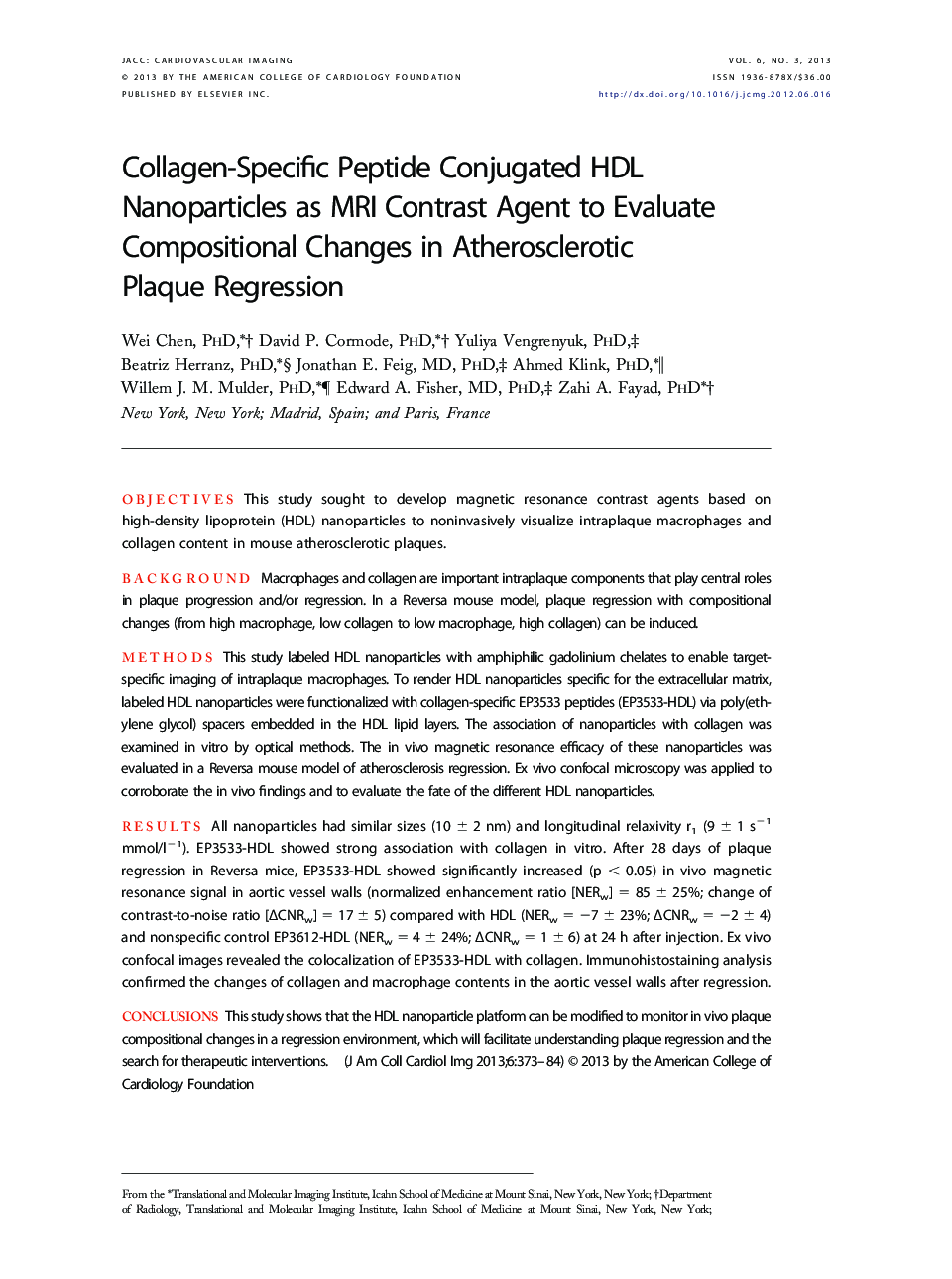| کد مقاله | کد نشریه | سال انتشار | مقاله انگلیسی | نسخه تمام متن |
|---|---|---|---|---|
| 2938201 | 1176927 | 2013 | 12 صفحه PDF | دانلود رایگان |

ObjectivesThis study sought to develop magnetic resonance contrast agents based on high-density lipoprotein (HDL) nanoparticles to noninvasively visualize intraplaque macrophages and collagen content in mouse atherosclerotic plaques.BackgroundMacrophages and collagen are important intraplaque components that play central roles in plaque progression and/or regression. In a Reversa mouse model, plaque regression with compositional changes (from high macrophage, low collagen to low macrophage, high collagen) can be induced.MethodsThis study labeled HDL nanoparticles with amphiphilic gadolinium chelates to enable target-specific imaging of intraplaque macrophages. To render HDL nanoparticles specific for the extracellular matrix, labeled HDL nanoparticles were functionalized with collagen-specific EP3533 peptides (EP3533-HDL) via poly(ethylene glycol) spacers embedded in the HDL lipid layers. The association of nanoparticles with collagen was examined in vitro by optical methods. The in vivo magnetic resonance efficacy of these nanoparticles was evaluated in a Reversa mouse model of atherosclerosis regression. Ex vivo confocal microscopy was applied to corroborate the in vivo findings and to evaluate the fate of the different HDL nanoparticles.ResultsAll nanoparticles had similar sizes (10 ± 2 nm) and longitudinal relaxivity r1 (9 ± 1 s−1 mmol/l−1). EP3533-HDL showed strong association with collagen in vitro. After 28 days of plaque regression in Reversa mice, EP3533-HDL showed significantly increased (p < 0.05) in vivo magnetic resonance signal in aortic vessel walls (normalized enhancement ratio [NERw] = 85 ± 25%; change of contrast-to-noise ratio [ΔCNRw] = 17 ± 5) compared with HDL (NERw = −7 ± 23%; ΔCNRw = −2 ± 4) and nonspecific control EP3612-HDL (NERw = 4 ± 24%; ΔCNRw = 1 ± 6) at 24 h after injection. Ex vivo confocal images revealed the colocalization of EP3533-HDL with collagen. Immunohistostaining analysis confirmed the changes of collagen and macrophage contents in the aortic vessel walls after regression.ConclusionsThis study shows that the HDL nanoparticle platform can be modified to monitor in vivo plaque compositional changes in a regression environment, which will facilitate understanding plaque regression and the search for therapeutic interventions.
Journal: JACC: Cardiovascular Imaging - Volume 6, Issue 3, March 2013, Pages 373–384